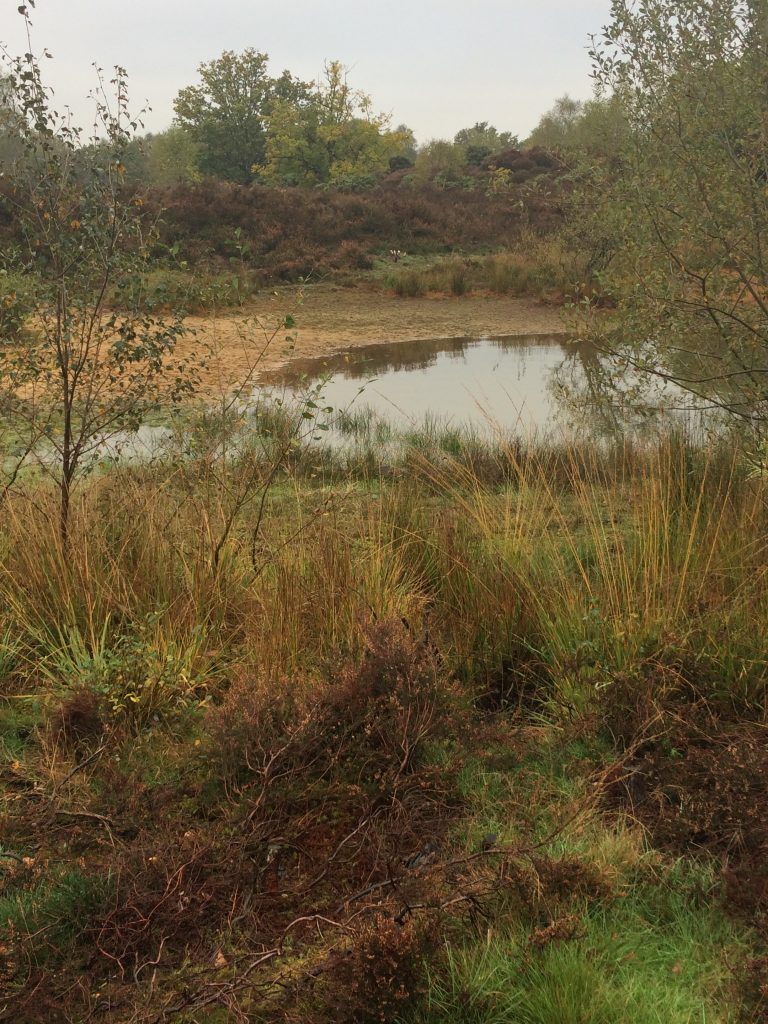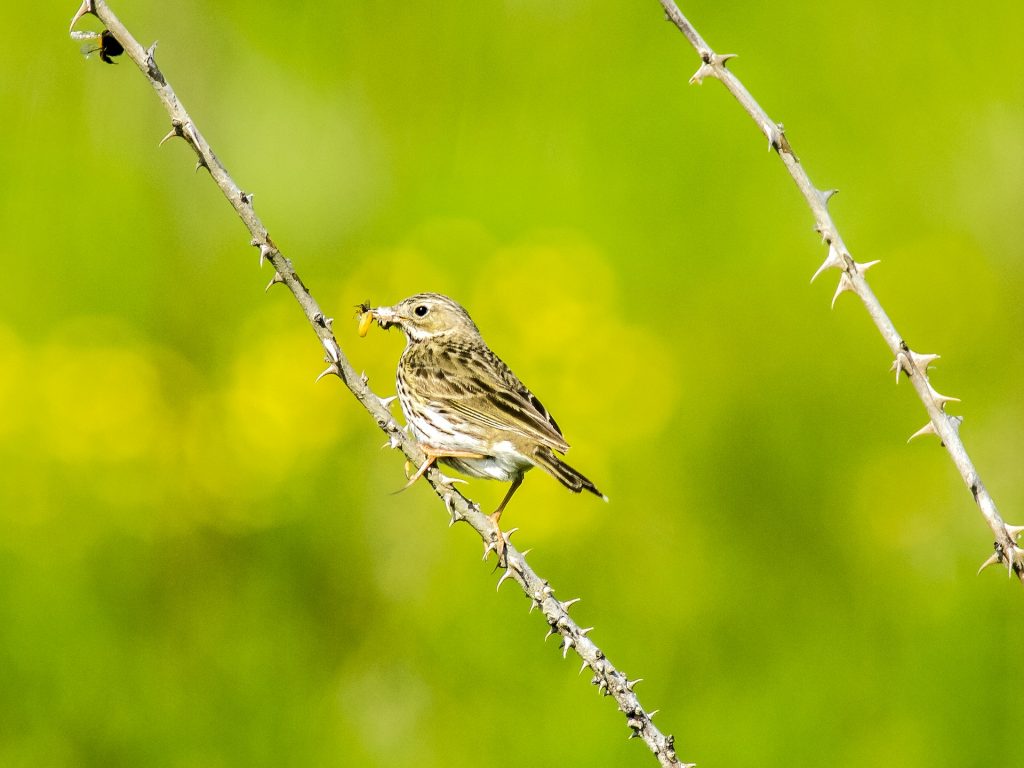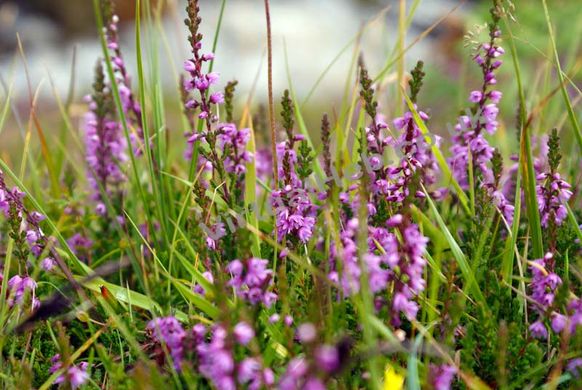For the past year I have been working on a new senior living housing project where the local planning authority have been very keen to see a landscape led concept whereby heathland character is reintroduced or restored on the largely sandy, acidic site.
My knowledge of lowland acid grassland was limited to walks on Hankley and Broxhead Commons with an occasional circumnavigation of Petersfield Heath pond, so my research into Lowland acid grassland leads me to write this blog.
To create this priority habitat, characterised by the domination of grasses and herbs on a range of lime-deficient, nutrient poor soils, a strong commitment to long-term management regimes is paramount. Favouring a soil pH between 4 and 5.5, acid grasslands develop over acidic rocks and deposits, including sands and gravels with species varying depending on the soils moisture content. In the south-central and south-west England (e.g. the New Forest), this is largely on moister soils where Bristle Bent dominates and is often associated with wet heath.

Vegetation species characteristic of lowland acid grassland include:
• Common Bent – Agrostis capillaris
• Wavy-Hair grass – Deschampsia flexuosa
• Sheep’s Fescue – Festuca ovina
• Heath Bedstraw – Galium saxatile
• Tormentil – Potentilla erecta
• Sheep’s Sorrel – Rumex acetosella

As a priority habitat, acid grassland is important for breeding or wintering birds such as woodlarks, nightjars, lapwings, skylarks and merlin.
Parched acid grassland contains many rare and scare vascular plant species, for example:
• Mossy stonecrop – Crassula tillaea
• Lotus angustissimus – bur medick
• Clustered clover – Trifolium glomeratum
And on sandy soils, can support many ground-dwelling and burrowing invertebrates including solitary bees and wasps.
To create acid grassland, the site needs to be assessed for its ecological value and suitable substrate for establishment, as well as topography which allows management by cutting or grazing – suitable sites could include landfill and mineral extraction site with appropriate pH planting substrate. Deep and shallow cultivation encourages residual seed bank to develop, which also needs controlling to deter invasive species. Organic matter may be required to improve water-holding capacity and nitrogen, phosphorous and potassium levels should be optimised, however creating habitat within local landscape characteristics is more sustainable. There are 4 options for establishment:
• Natural colonisation – the simplest and most successful method of creating natural habitats appropriate to local conditions but a slow process with areas of bare ground remaining and prone to invasive species
• Turf inoculants from local donor sites following sowing of a nurse grass to stabilise the substrate.
• Green-hay strewing of local lowland acid grassland, removing hay from the receptor site after a few weeks, once seed has dropped.
• Seeding with seed collected from local acid grassland using a brush harvester or bought from a reputable seed house and of local provenance.
New grasslands fail mainly due to poor management, whereby they degenerate to rough, unattractive species poor grassland. Two options are:
• Grazing which is more gradual and less damaging to the habitat – different types of animals can be used to create a mosaic of grassland types including sheep and cattle. Trampling has the advantage of creating gaps for establishment of wildflowers. Grassland grazing should be controlled or prevented for the first 3 years. Grass response to grazing varies with habitat and resources and therefore at this festive time, it is difficult to analyse the effect of reindeer grazing on lowland acid grass production.
• Cutting is less successful as it is unselective in vegetation removal and may damage invertebrate populations but can be useful to remove unpalatable species so is useful to use in combination with grazing. Cutting should be in mid-June-July, depending on species of vegetation and with consideration to breeding birds. Cutting should be 100-150mm ht and arisings should be removed to keep nutrient release low.

Ling Heather – Calluna vulgaris – needs to be cut/grazed or burnt to regenerate root-stock and extend lifespan to over 25-30 years. When mature shoots and flowers slow down, and the central frame branches spread, admitting light to the ground allowing other heathland species to grow. On large sites, burning may be a long -term option to build a mosaic of different age stands and heather regenerates more rapidly after burning. Mowing or cutting has the advantage of convenience during any weather conditions but may damage older stands which may not regenerate in dry periods. Also, purple moor grass may dominate, nutrients may be lost, and vehicles may damage older stands. Grazing on managed heather can support heather stands for more than 10 years whereas on unmanaged heather, lifespan can be 20-25 years. Rotation of burning/cutting should be 1/15th of Ling acreage/per year. Close grazing may cause grasses to thrive but suppress heathland plants such as Tormentil and Bedstraw.
It will be interesting to evaluate which methods we will ultimately incorporate into the long-term management of our project, but there is a need for a fine balance between aesthetics required by the developer and subsequent residents and the sustainable landscape-led approach desired by local planning and landscape officers.
References:
1. Forest Research BPG Note 16. Lowland Acid Grassland. Creation and management in land regeneration The Land Regeneration and Urban Greenspace Research Group (2014) www.forestry.gov.uk/forestresearch.
2. UK Biodiversity Action Plan Priority Habitat Descriptions Lowland Dry Acid Grassland BRIG (ed. Ant Maddock 2008)
www.jncc.defra.gov.uk/page-5515